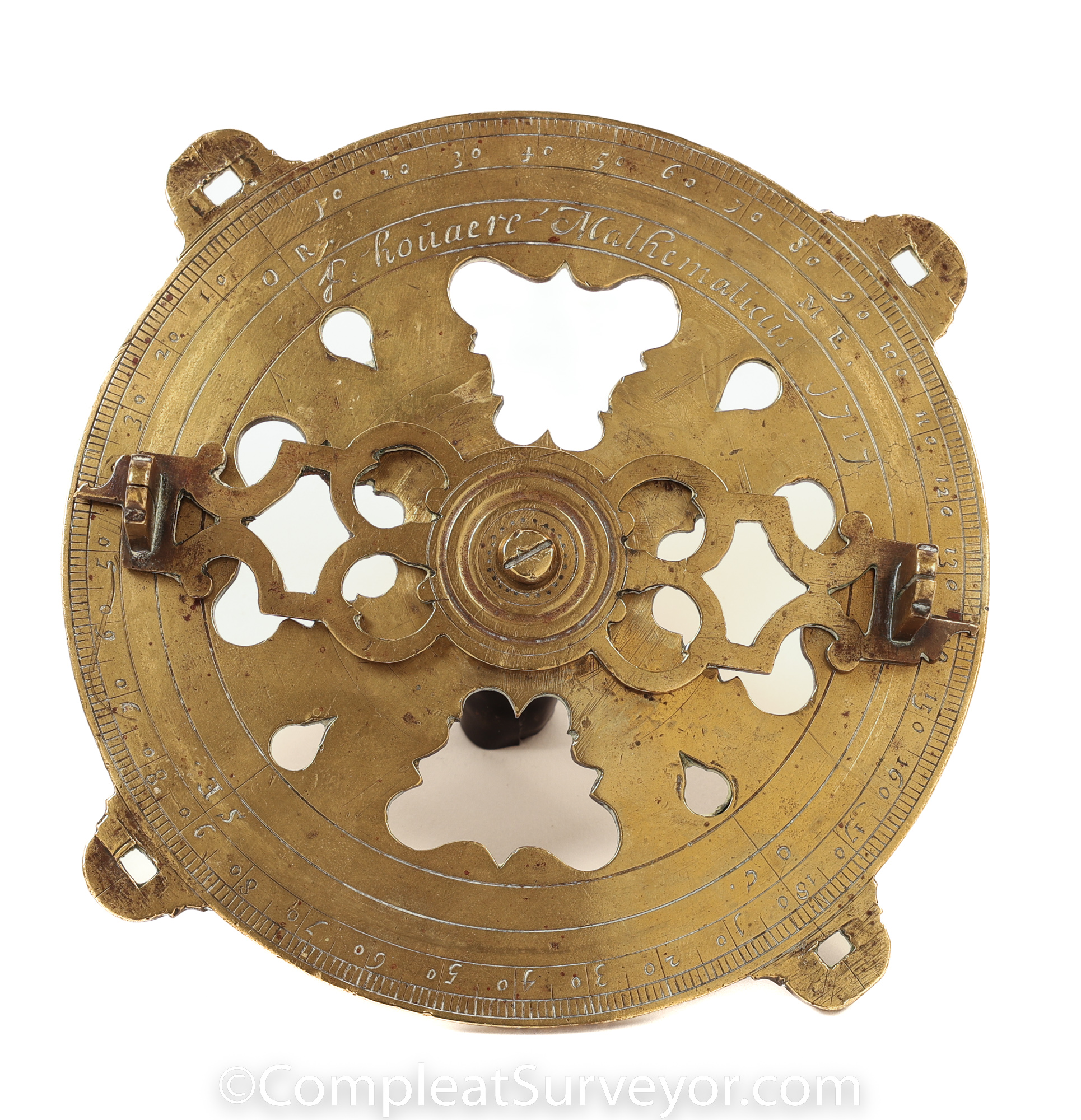
Wonderful Waingnart Theodolite - Circa 1600 to 1650
This is a fascinating early Theodolite. You will have hours and hours of fun researching and trying to date this instrument. I believe this instruments was made in the first half of the1600s. Here are the main data points:
1. The design of this theodolite looks an Early Second Generation Theodolite to my eye. Please look at the Artistic Early Second Generation Theodolites (Circa 1600 to 1650) on that webpage, especially the instruments made by Damerey. While the Damerey instruments are more ornate obviously, the basic design is pretty much the same. And like the Damerey Theodolites, the Waingnart Theodolite does not have a center magnetic compass.
2. "f. houraere Mathematicus 1717" is engraved on the face of the Waingnart Theodolite. I couldn't find a reference to "f. houraere" on the internet. But I believe he was an owner of this Theodolite, although not the original owner.
3. "fecit Waingnart MS" is engraved on the back of the Theodolite. "Fecit"is Latin for "made by". So Waingnart was the maker of this instrument. Unfortunately, I couldn't find a reference to a Waingnart who made instruments on the internet. The "MS" after the signature is interesting. I've seen the "MS" abbreviation on several other old and wonderfully designed European instruments, and I believe the "MS" stands for "MeisterStück". MeisterStück was the top designation of a guild that specialized in metalwork. Achieving the MS designation was not easy - the work product was judged. Based on the MS designation, I believe that Waingnart was a highly skilled artisan, and that this theodolite was state of the art, or thereabouts when made.
When I consider the above points, my best guess is that Waingnart made this instrument in the 1600 to 1650 time frame. The Theodolite has the same look and feel as the Damerey instruments which were made in the first quarter of the 1600s. I also suspect that an MS rated artisan would not make an instrument in 1717 that lacked a center compass and was otherwise 60 years or more out of date with the then current style of instruments being made. So I'm at 1600 to 1650 on this instrument, but clearly that's just my best guess.
The Waingnart Theodolite almost certainly was designed with 4 sight fixed sight vanes set at 90 degrees apart. You could have 4 vanes made with patina added to make the instrument look complete. But I would leave this Theodolite just the way it is. I think it is a wonderful looking instrument as is, and would still be usable since the alidade has both of its sight vanes.
I think this Theodolite would look wonderful if display on a desk in a transparent plastic holder.
$3250 (Postpaid) - Email Russ
Additional Pictures
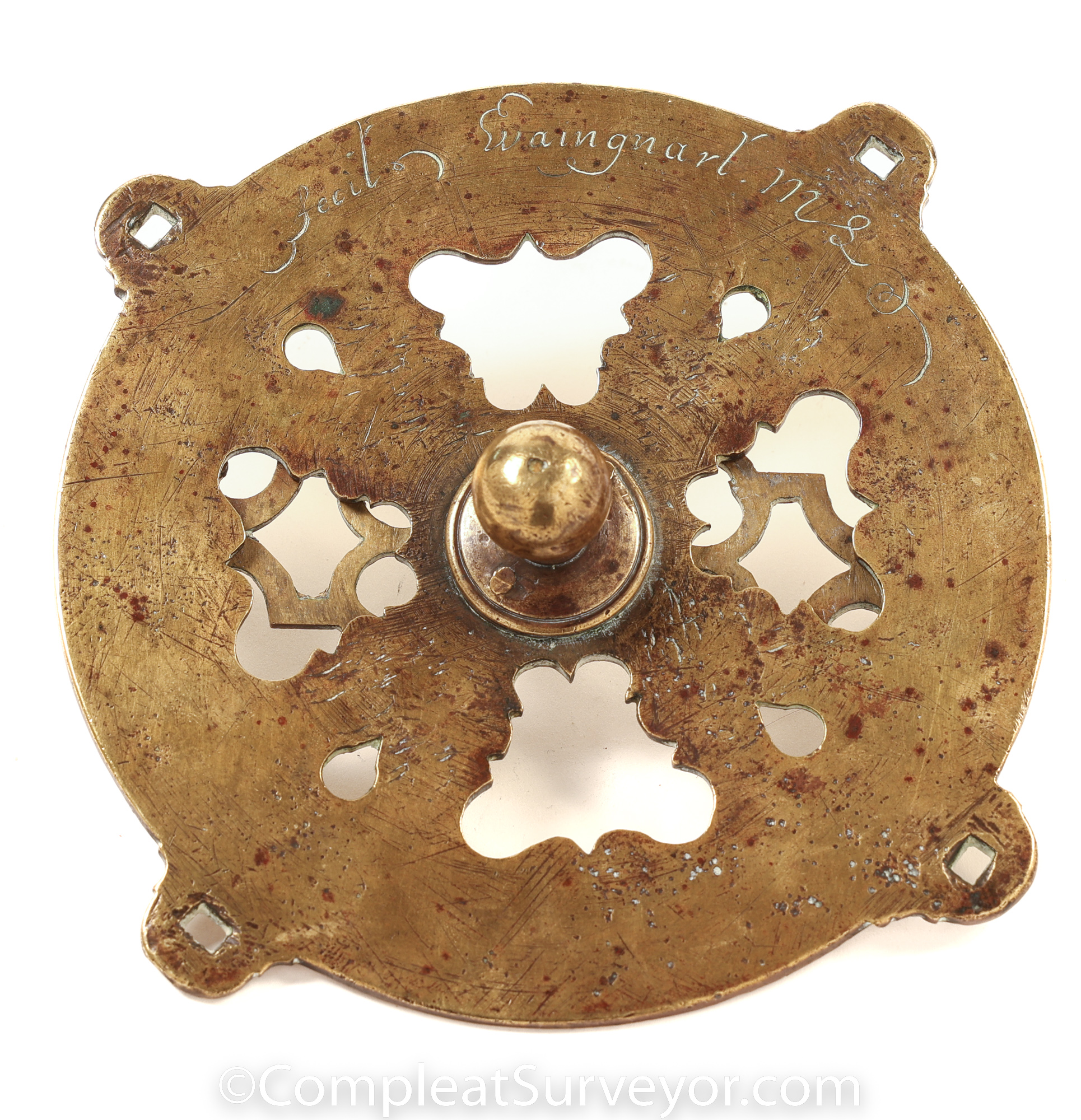
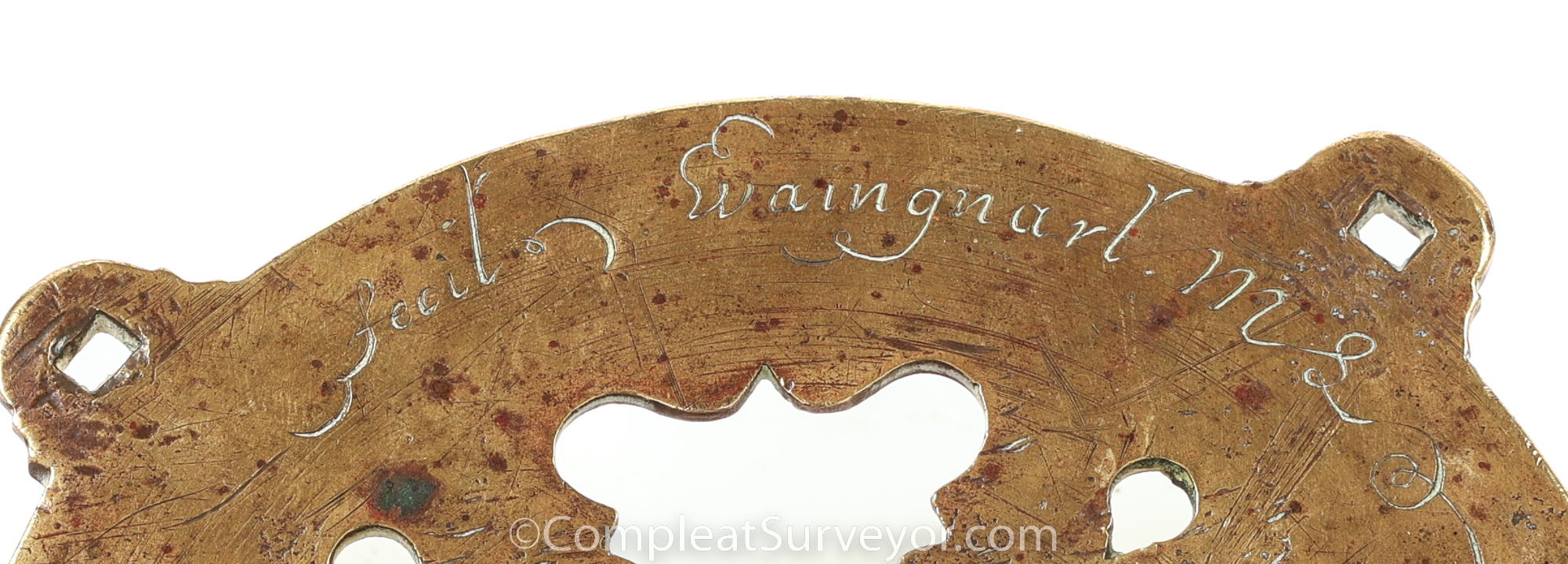
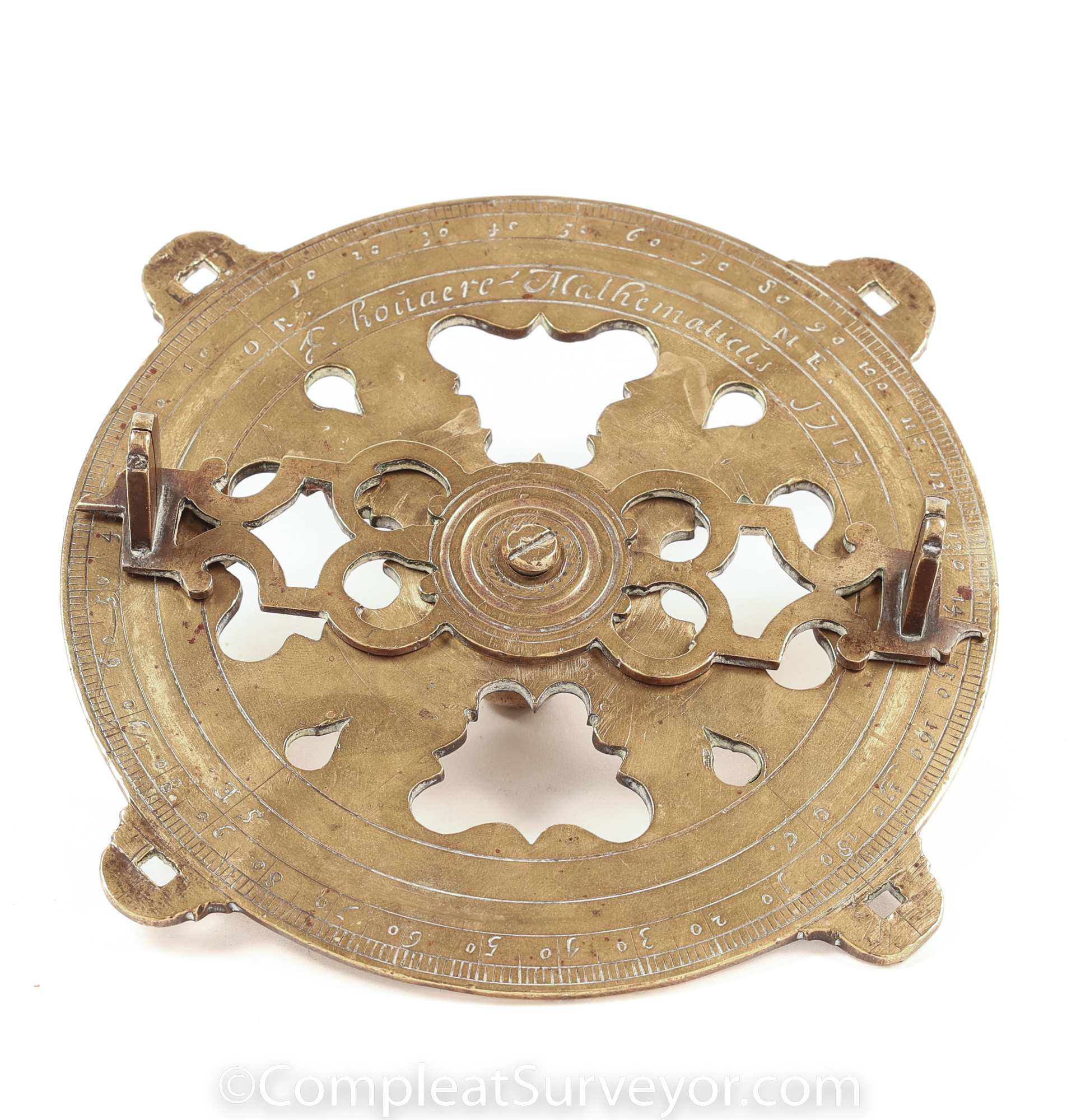
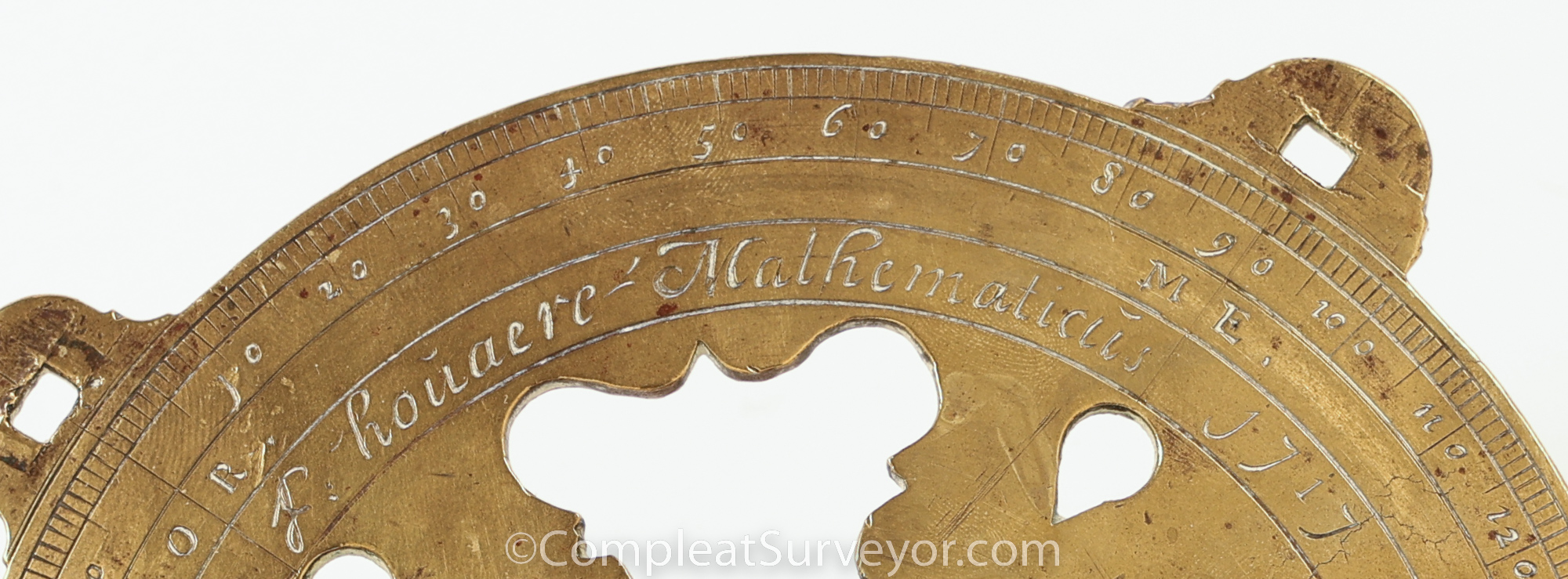
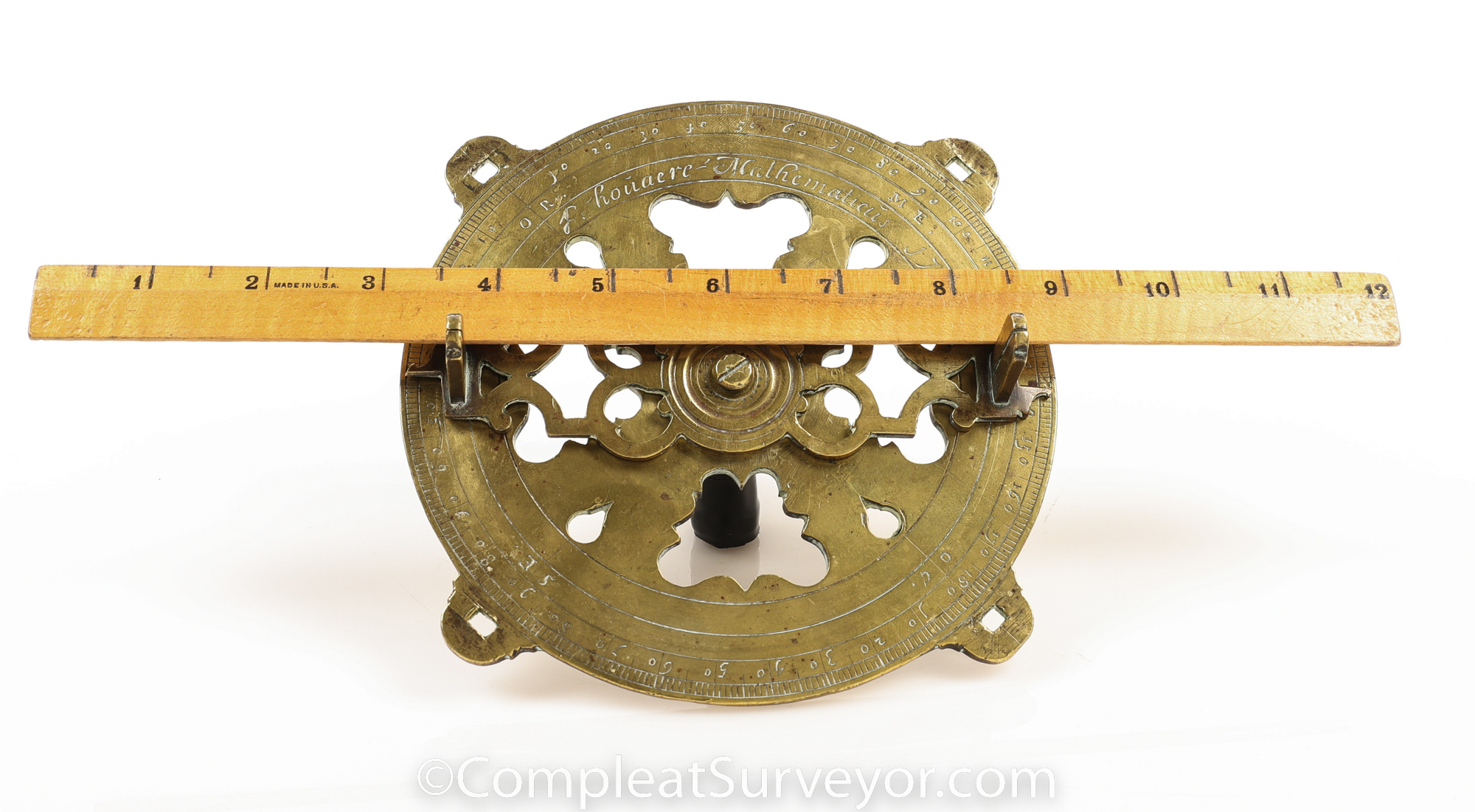
© 2020 Russ Uzes/Contact Me